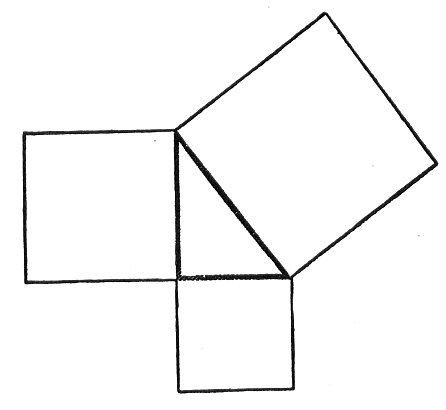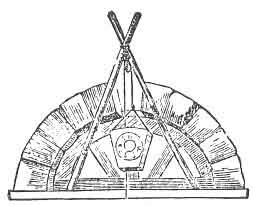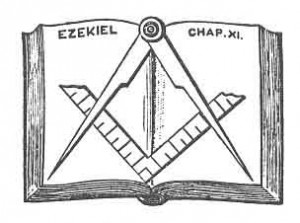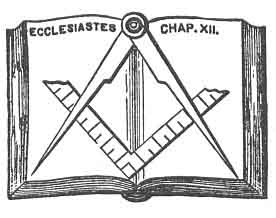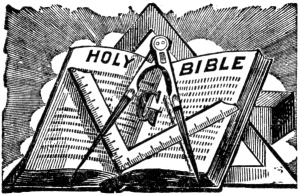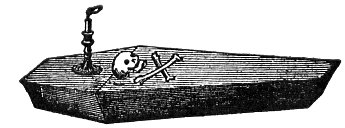p. 62
* * * * * * To understand literally the symbols and allegories of Oriental books as to ante-historical matters, is willfully to close our eyes against the Light. To translate the symbols into the trivial and commonplace, is the blundering of mediocrity.
All religious expression is symbolism; since we can describe only what we see, and the true objects of religion are THE SEEN. The earliest instruments of education were symbols; and they and all other religious forms differed and still differ according to external circumstances and imagery, and according to differences of knowledge and mental cultivation. All language is symbolic, so far as it is applied to mental and spiritual phenomena and action. All words have, primarily, a material sense, however they may afterward get, for the ignorant, a spiritual non-sense. “To retract,” for example, is to draw back, and when applied to a statement, is symbolic, as much so as a picture of an arm drawn back, to express the same thing, would be. The very word “spirit” means “breath,” from the Latin verb spiro, breathe.
To present a visible symbol to the eye of another is not necessarily to inform him of the meaning which that symbol has to you. Hence the philosopher soon superadded to the symbols explanations addressed to the ear, susceptible of more precision, but less effective and impressive than the painted or sculptured forms which he endeavored to explain. Out of these explanations grew by degrees a variety of narrations, whose true object and meaning were gradually forgotten, or lost in contradictions and incongruities. And when these were abandoned, and Philosophy resorted to definitions and formulas, its language was but a more complicated symbolism, attempting in the dark to grapple with and picture ideas impossible to be expressed. For as with the visible symbol, so with the word: to utter it to you does not inform you of the exact meaning which it has to me; and thus religion and philosophy became to a great extent disputes as to the meaning
p. 63
of words. The most abstract expression for DEITY, which language can supply, is but a sign or symbol for an object beyond our comprehension, and not more truthful and adequate than the images of OSIRIS and VISHNU, or their names, except as being less sensuous and explicit. We avoid sensuousness only by resorting to simple negation. We come at last to define spirit by saying that it is not matter. Spirit is–spirit.
A single example of the symbolism of words will indicate to you one branch of Masonic study. We find in the English Rite this phrase: “I will always hail, ever conceal, and never reveal;” and in the Catechism, these:
Q∴ “I hail.”
A∴ “I conceal;”
and ignorance, misunderstanding the word “hail,” has interpolated the phrase, “From whence do you hail!'”
But the word is really “hele,” from the Anglo-Saxon verb![]() elan, helan, to cover, hide, or conceal. And this word is rendered by the Latin verb tegere, to cover or roof over. “That ye fro me no thynge woll hele,” says Gower. “They hele fro me no priuyte,” says the Romaunt of the Rose. “To heal a house,” is a common phrase in Sussex; and in the west of England, he that covers a house with slates is called a Healer. Wherefore, to “heal” means the same thing as to “tile,”–itself symbolic, as meaning, primarily, to cover a house with tiles,–and means to cover, hide, or conceal. Thus language too is symbolism, and words are as much misunderstood and misused as more material symbols are.
elan, helan, to cover, hide, or conceal. And this word is rendered by the Latin verb tegere, to cover or roof over. “That ye fro me no thynge woll hele,” says Gower. “They hele fro me no priuyte,” says the Romaunt of the Rose. “To heal a house,” is a common phrase in Sussex; and in the west of England, he that covers a house with slates is called a Healer. Wherefore, to “heal” means the same thing as to “tile,”–itself symbolic, as meaning, primarily, to cover a house with tiles,–and means to cover, hide, or conceal. Thus language too is symbolism, and words are as much misunderstood and misused as more material symbols are.
Symbolism tended continually to become more complicated; and all the powers of Heaven were reproduced on earth, until a web of fiction and allegory was woven, partly by art and partly by the ignorance of error, which the wit of man, with his limited means of explanation, will never unravel. Even the Hebrew Theism became involved in symbolism and image-worship, borrowed probably from an older creed and remote regions of Asia,–the worship of the Great Semitic Nature-God AL or ELS and its symbolical representations of JEHOVAH Himself were not even confined to poetical or illustrative language. The priests were monotheists: the people idolaters.

Moe is the founder of GnosticWarrior.com. He is a father, husband, author, martial arts black belt, and an expert in Gnosticism, the occult, and esotericism.

